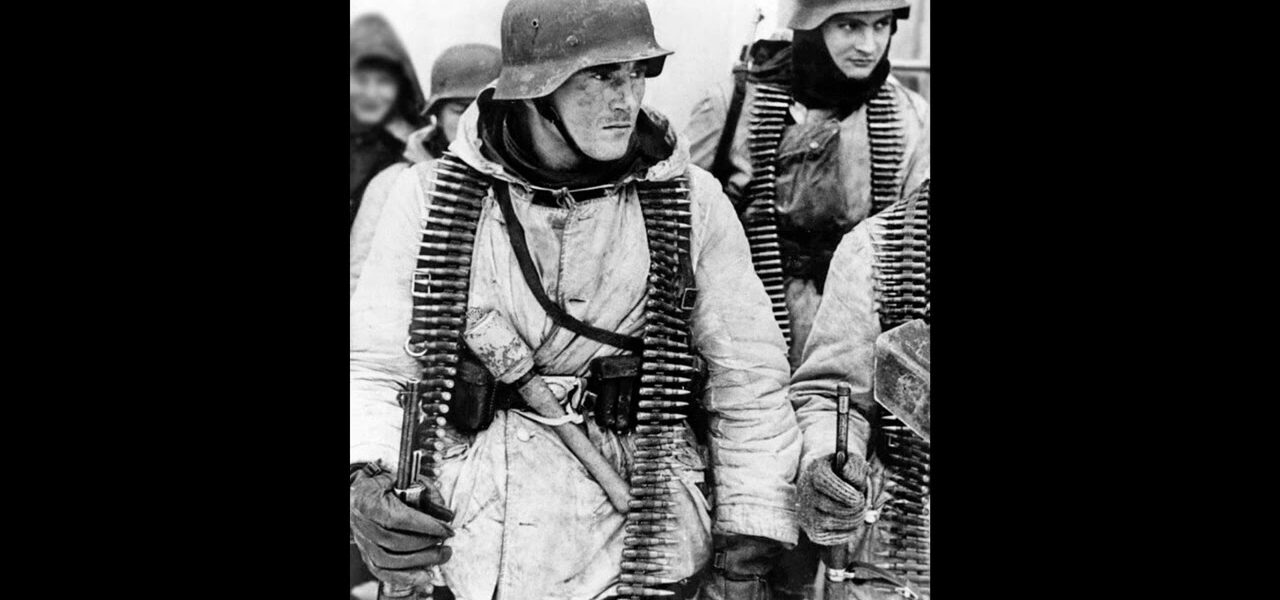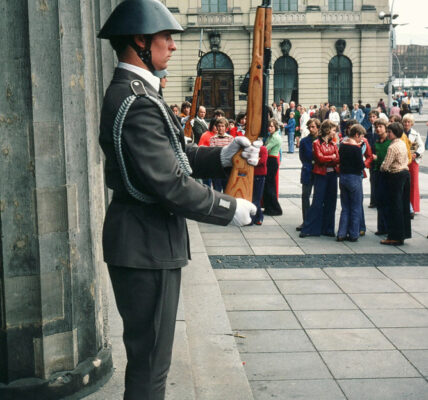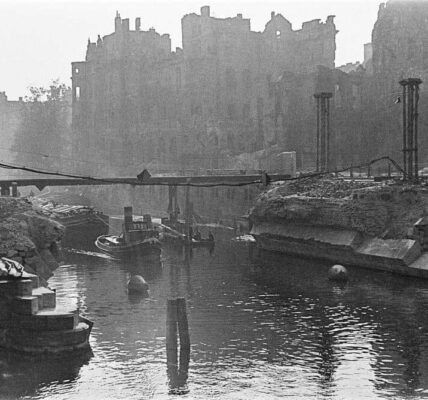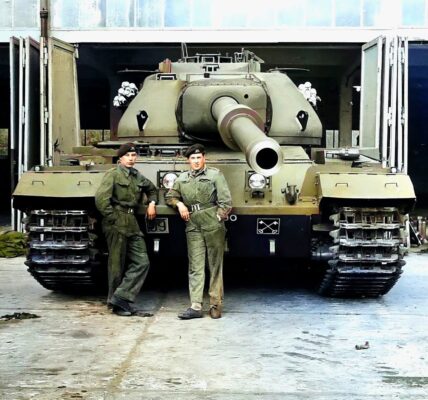The MG 42 – The German all-purpose machine gun of World War II
The MG 42 (Maschinengewehr 42) was one of the most famous and feared infantry weapons of World War II. Developed in 1942 by the German company Metall- und Lackwarenfabrik Johannes Großfuß , it served as the successor to the MG 34. The MG 42 was a general-purpose machine gun that was used in a variety of ways on the front lines—as a light machine gun on a bipod, as a heavy machine gun on a tripod, or for anti-tank and anti-aircraft defense.
Technical features
The MG 42 was characterized by its extreme rate of fire of 1,200 to 1,500 rounds per minute—significantly faster than comparable weapons from other nations. This high rate of fire resulted in a distinctive, “tearing” sound that struck fear into enemy soldiers. Because of this unique sound, the MG 42 received numerous nicknames such as “Hitler’s Circular Saw,” “Bone Cutter,” “Emga” (phonetic for MG), and “Cross”—a reference to the weapon’s deadly power.
The weapon used the widely used 7.92×57 mm Mauser cartridge and was gas-operated. The design was robust, easy to operate, and highly reliable, even under extreme weather conditions. However, the barrel had to be changed regularly because it quickly overheated during continuous fire. For this purpose, the MG 42 featured a quick-change system that allowed a trained marksman to replace the barrel in a matter of seconds.
Tactical use and effect
The MG 42 was designed as an all-purpose weapon and fulfilled this role with great efficiency. In German tactics, the machine gun was considered the central weapon of the infantry group, around which the remaining soldiers moved. The firepower of a single MG 42 could halt or at least significantly slow entire enemy attacks.
In static defensive positions, the MG 42 could be mounted on a tripod and provide targeted, continuous fire support. In the offensive, it was more easily portable on a bipod and operated by a crew of several soldiers—a gunner, a loader, and an ammunition carrier.
The psychological impact of the MG 42 was enormous. Soviet soldiers reported great fear of the weapon’s characteristic “sawing sound.” The MG 42 was also considered particularly dangerous by Allied troops. The weapon’s sound was deliberately simulated in US Army training materials to prepare soldiers for the reality of combat.
Production and distribution
The MG 42 was simpler and less expensive to manufacture than its predecessor, the MG 34. While the MG 34 had many milled parts, the MG 42 relied heavily on pressed steel parts. This significantly simplified mass production. An estimated 400,000 MG 42s were produced between 1942 and 1945.
The MG 42 design continued to be used after the war. It formed the basis for the German MG 3, which was introduced in the 1950s and remains in service with the Bundeswehr to this day—a testament to the design’s efficiency and longevity.
Many other nations adopted technical aspects of the MG 42 for their own weapons developments. For example, it influenced the US M60 machine gun.
Meaning in historical context
The MG 42 was more than just a weapon—it was a symbol of modern warfare. Its design marked a turning point in weapon design: a shift away from complex and maintenance-intensive weapons toward robust, cost-effective systems with high firepower. While the MG 42’s high firing rate was criticized for leading to high ammunition consumption, it was deliberately used in German military strategy to demoralize enemy troops and suppress movement.
The weapon became a terror on the battlefields of Europe. Especially on the Eastern Front, the MG 42 was a crucial element in the German defense against the numerically superior Red Army. It was also used in large numbers in Italy, North Africa, and Normandy.
Nicknames and cultural perception
The nicknames “Hitler’s Circular Saw” or “Bone Cutter” reflect the deadly efficiency of the MG 42. Soldiers at the front immediately associated the sound of the weapon with mortal danger. For German soldiers, however, the MG 42 was a symbol of superior technology and firepower. The nickname “Emga,” derived from the abbreviation “MG,” was often used to refer to the weapon in field jargon.
The MG 42 appears in numerous documentaries, films, and historical accounts. War films such as “Saving Private Ryan” and “Band of Brothers” realistically portray the weapon’s effectiveness. The MG 42 is also used in video games to this day, further maintaining its popularity among younger generations.
Conclusion
The MG 42 was one of the most effective and influential machine guns of World War II. Its combination of high rate of fire, ease of production, and robust construction made it a fearsome weapon on the battlefield. The MG 42’s influence extends far beyond the end of the war and continues to shape modern weapons developments today.
The nicknames it received—from “Hitler’s Circular Saw” to “Bone Cutter”—are an expression of the fear and respect this weapon inspired among friend and foe alike. It remains a technical masterpiece that symbolizes both the cruelty of war and the advances in weapons technology.




